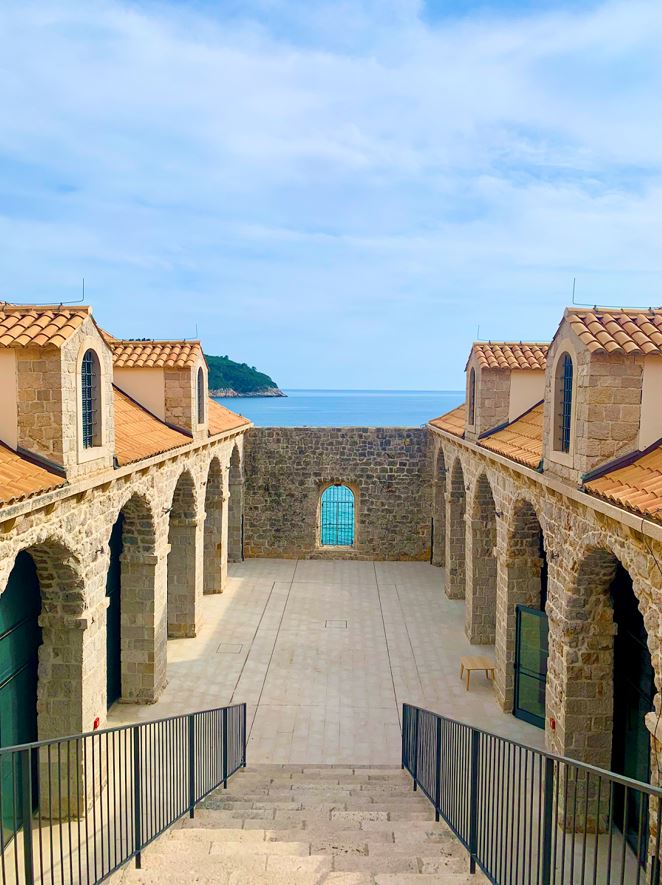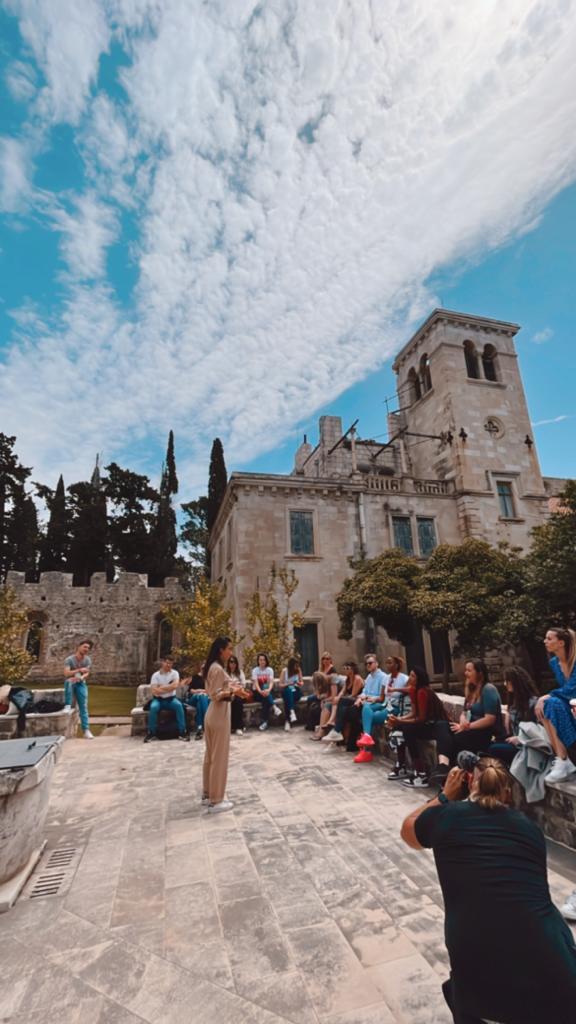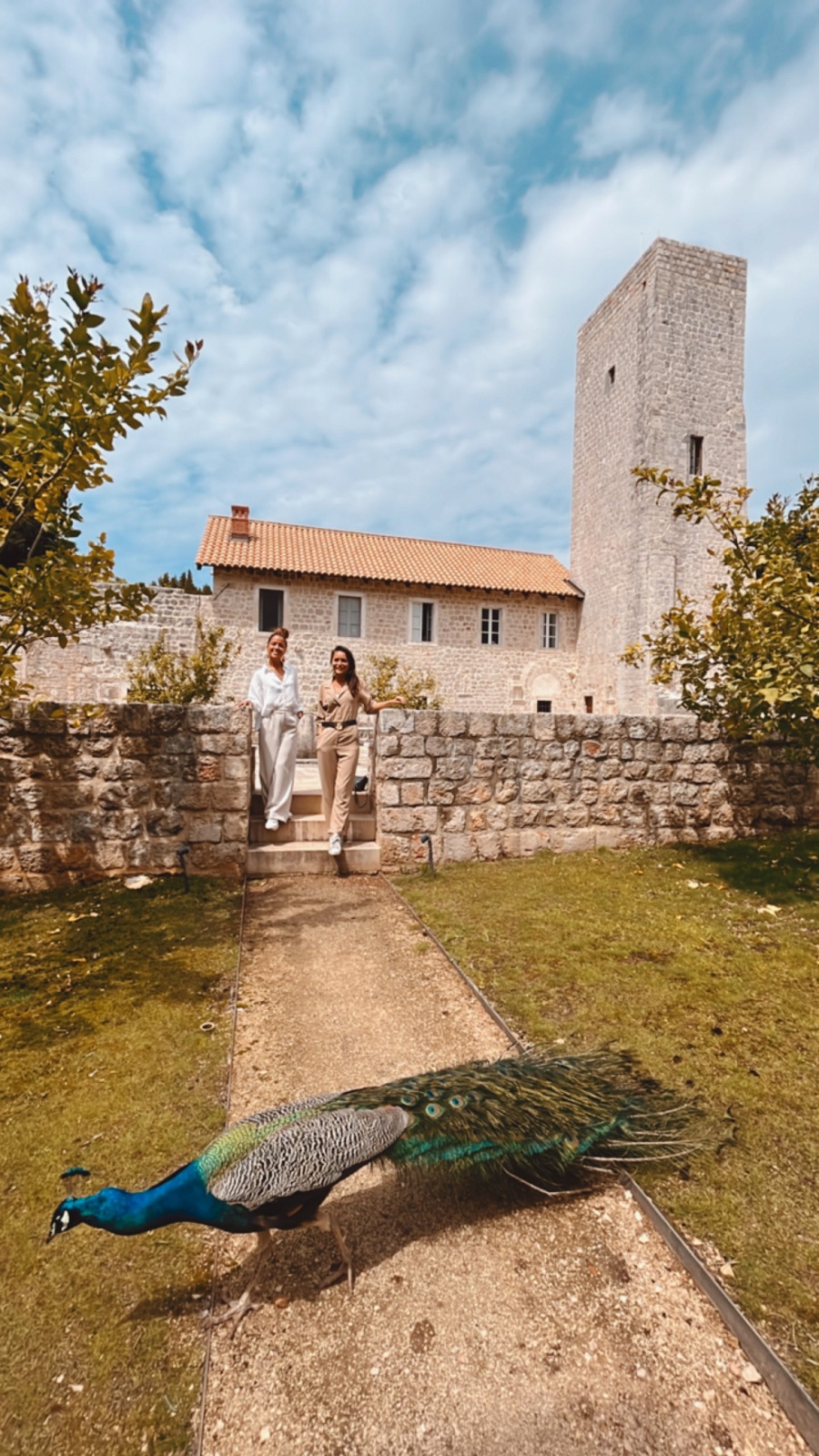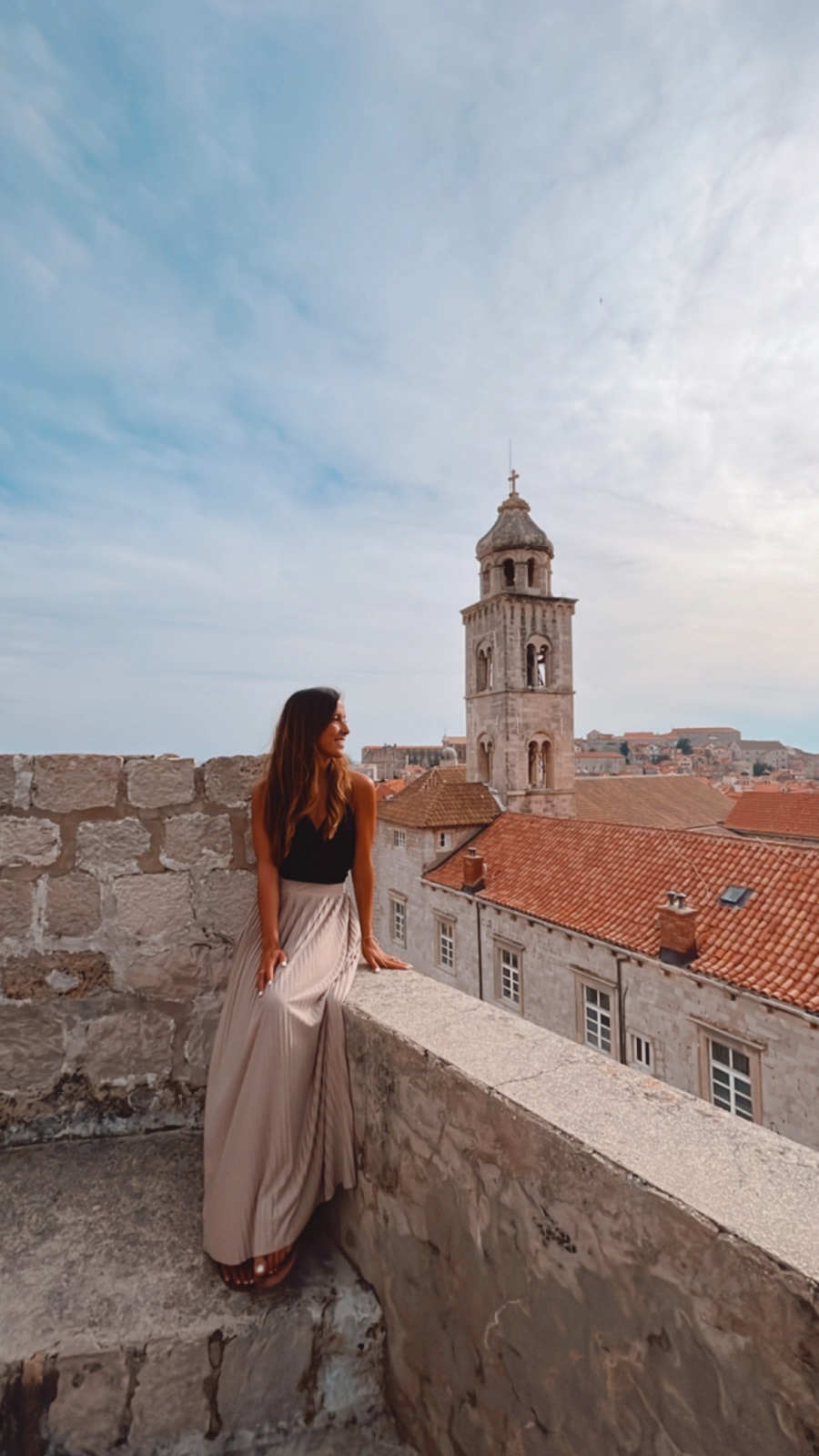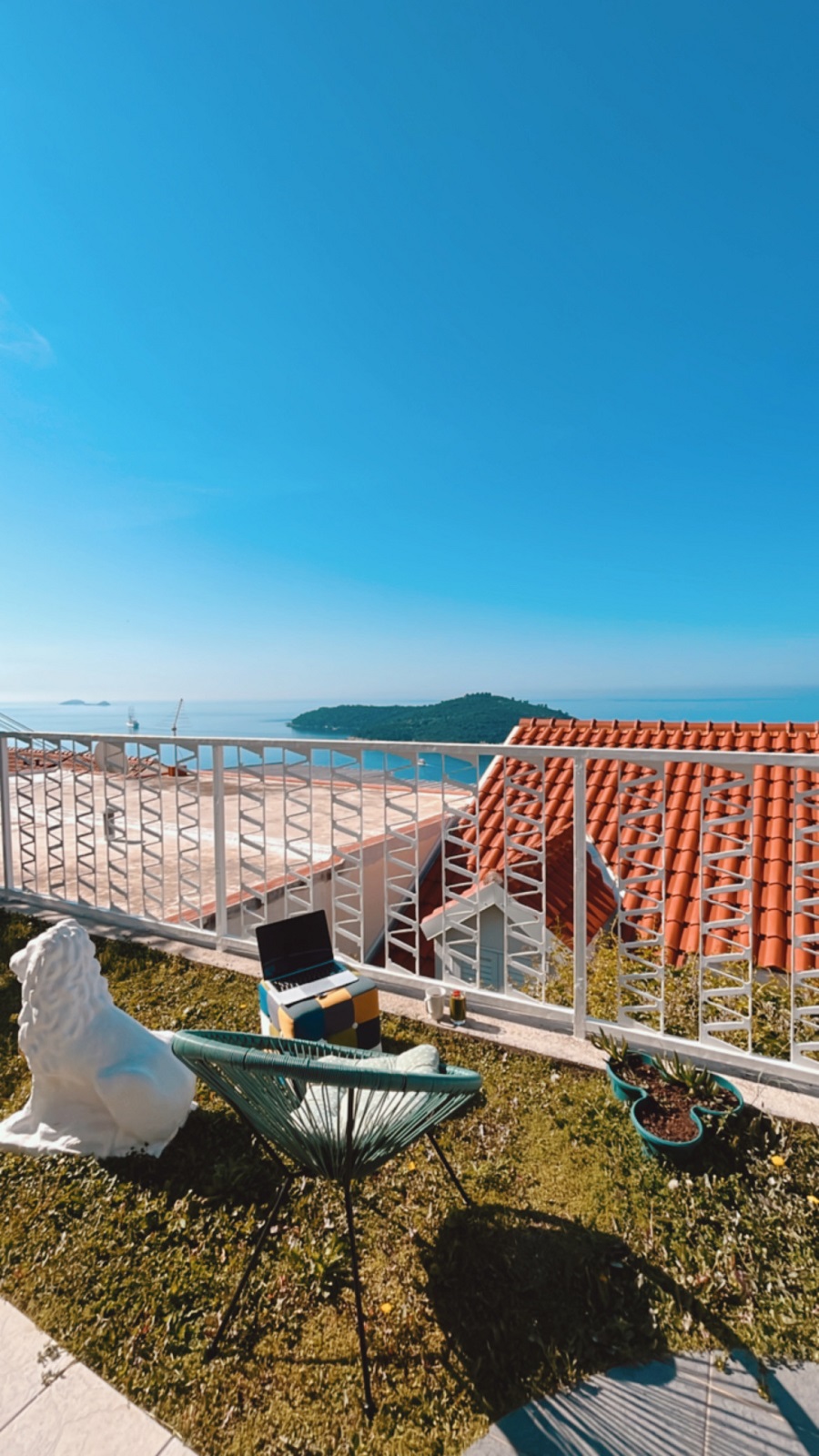Beyond the Dubrovnik Walls: 3. The Island of Lokrum
June 16, 2022 - Continuing the new TCN series exploring beyond the Dubrovnik walls, an escape from the crowds to one of the top treasures of the Adriatic - the island of Lokrum.
For those who tell me that Dubrovnik is just a 2-day destination and that there is nothing really to do outside the old town, I smile. I don't think I have ever come across a destination in Croatia which has so much more to offer than the stereotype it possesses. There are so many things to do in and around Dubrovnik that I would argue a week is not enough. Indeed, the inspiration for this new TCN series, Beyond the Dubrovnik Walls, were last year's 10 Dubrovnik Digital Nomads-in-Residence, who proclaimed that they were not ready to go home after a month in the city, and that one of the key messages Dubrovnik had to develop was the rich offer for tourists 'beyond the walls.' Yes, the old town is unmissable, but so too is the magic that is all around. Including one of my favourite places in all Croatia...

The island of Lokrum.
I knew little about the island of Lokrum before I visited, except that it was one of the most-visited attractions in Dubrovnik, a place where locals (and tourists) went to escape the summer crowds and heat. But, as I quickly learned on my first visit a couple of years ago, Lokrum is so much more than that. In addition to being the cleanest place I have ever seen in Croatia, the wealth of nature, culture, heritage and overall magnificence is quite astonishing. Do not go to Dubrovnik and miss out on a trip to Lokrum. Your visit would be all the poorer.
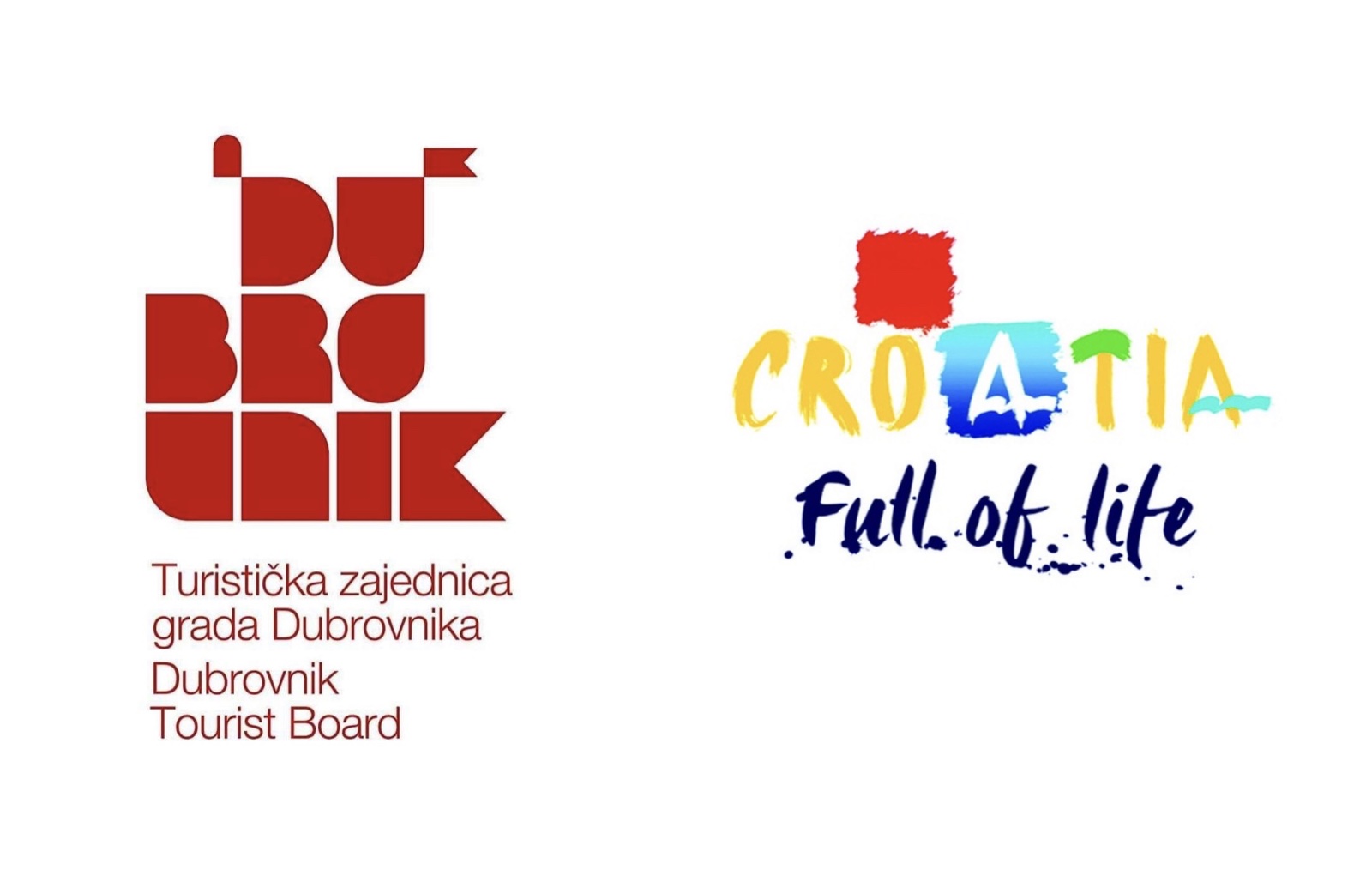
Let's start with the cleanliness. Lokrum is a nature reserve which is taking itself very seriously. It is forbidden to smoke or light a fire on the island, dogs are not allowed, and it is not permitted to spend the night on the island. Indeed, only two members of the Lokrum Fire Brigade sleep on the island. The island is immaculate! And the beautifully maintained horticultural and botanical attractions serve to give Lokrum an even more squeaky clean feel.
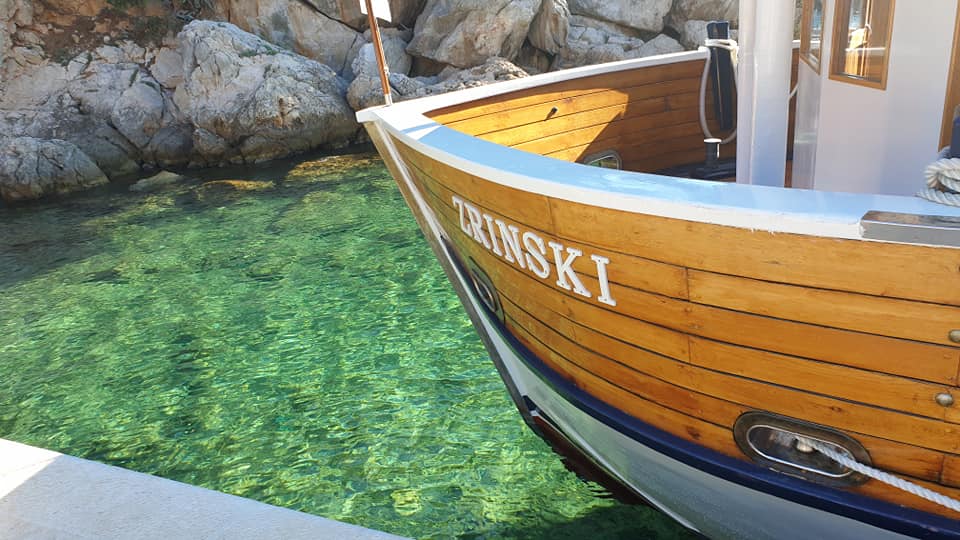
Just 10 minutes by boat from the old city (regular departures from the old harbour take place every 30 minutes during the day from April to November), the island of Lokrum is truly a world away, and the journey on the restored 50-year-old wooden boats is an experience in itself, as you watch the majestic old city disappear into view behind, before approaching the island from the far side, with the city out of sight.
Welcome to Nature!

Lokrum has its own biodiversity and unique climate, a fact that has been noted since ancient times, and the rich diversity of its plant life was enriched in 1959 when two hectares of land were allocated to the Botanical Garden, where the first exotic species were planted. Walk around today, and you can find about 400 indigenous species from Australia, South America, Africa, other parts of the world and the wider region. An extraordinary collection, and combined with the island's carefully manicured hedges and gardens, this is one area where Lokrum stands out from other islands. But only one, for there is so much more to this exceptional island.
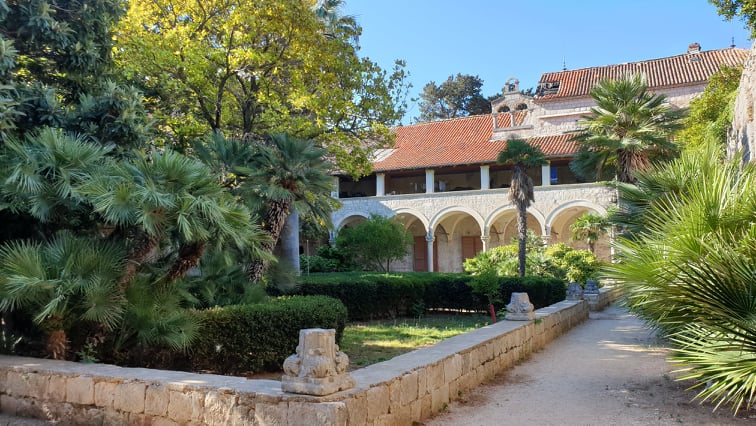
The legacy of Game of Thrones is massive in Dubrovnik, with more than a few visitors knowing the city by its screen name of Kings Landing. Not only was the island of Lokrum also used as a filming location, but the hit HBO show The garden of the old Benedictine Monastery was used to shoot scenes depicting the fantasy city of Qarth in Season 2 of the show. In this scene Daenerys Targaryen introduces herself to a few members of local society. Later on, just before she enters the House of the Undying, she is standing on the stairs that are part of Lokrum’s Gardens of Maximilian.

The most important area for Game of Thrones lovers is a tin GoT museum in the former Benedictine Monastery. There sits the Iron Throne, the most important seat in the Kingdom of Westeros. Not only that, but it is free for visitors to sit in and take pictures.
While Game of Thrones may not be real, there is plenty of actual history on the island of Lokrum, which was first mentioned in 1023, with the founding of the Benedictine monastery and abbey. And it is the Benedictines who are responsible for the so-called Curse of Loktum, which is animated in the museum in the monastery basement.
The last Benedictines left the island in 1808, when the island was sold to new owners. On their last night, the monks placed a complex curse on the island. Since then, anyone who tried to seek Lokrum for their own has met an unexpected and untimely death.
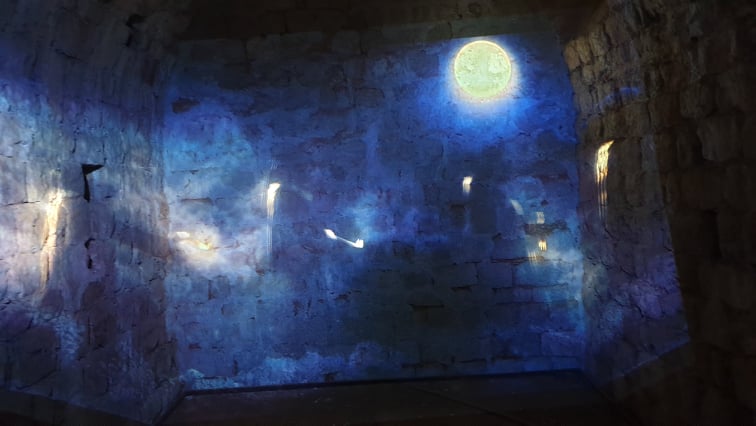
The night before the monks left, they gathered in their hoods, lit their candles, turned them upside down, and with their heads bowed, whispering prayers and murmuring songs, slowly walked around their ancient holding, mourning their loss and saying goodbye to their beautiful home.
The legend, of course, adds drama to such a goodbye.
The dark and mysterious line of monks in the end cursed the future owners of the island under the flickering light of candles. The legend, to which certain deaths and accidents that happened to local sellers and owners were associated, would have faded away if not for the tragedies which befell the family of the Austrian emperor and the Croatian king Francis Joseph I, whose family members owned Lokrum.
The execution of the emperor’s brother, Archduke Maximilian, in Mexico, the assassination of his wife Elisabeth at Lake Geneva and the suicide of his son and heir Rudolph in Mayerling violently and forever impressed the legend in collective memory and enshrouded the island in dark shadows.
A happier legend took place more than 500 years earlier, when English King Richard the Lionheart's ship got into trouble in storms on the way back from The Crusades. Vowing to build a church on the land that might save him, the famous English king finally found shelter on Lokrum where he was shipwrecked, but survived. Keeping true to his promise, Richard built the promised church, although locals persuaded him to do so in the old town of Dubrovnik, rather than the island of Lokrum. It is said that the ensuing church was built on the site of today's Dubrovnik Cathedral. There is an exhibition to the episode in the basement.

One of Dubrovnik's more unusual claims to fame is that it is the birthplace of quarantine, with the first State-sanctioned quarantine stations set up on two nearby islands in the Dubrovnik Republic back in 1377. This concept was extended to the Lazareti, just outside the city walls, a beautiful stone complex which served as a 40-day quarantine area for traders, and which today is a multi-purpose event and entertainment centre, including arguably Europe's most beautiful co-working space.
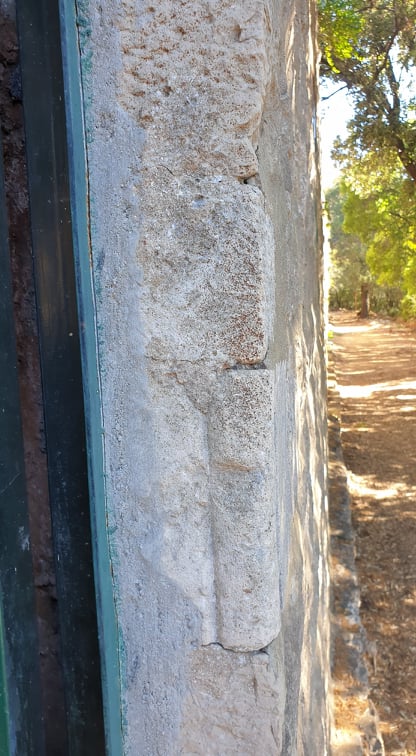
Lokrum has its own Lazareti complex which is well worth a visit, if only for the incredible precision of the 16th-century stone walls, which are straight as an arrow and 100 metres by 100 metres. Inside the walls, it was intended to house a large quarantine facility, and you can still see the remnants of the toilets, fireplace and ventilation in the individual cubicles, but the complex was in fact never completed. Some time later, the authorities realised that such a construction could be used against the republic if the island was successfully invaded. Some of the stone was therefore transferred to the city and used in the construction of Dubrovnik's iconic old town walls.
That strategic importance was not lost on the French when they successfully invaded in 1806, and they began to erect a fort on Glavice hill, some 97 metres above sea level. The impressive fort, complete with ramparts and ditches, was then further developed by the Austrians in the 1830s. The legacy for the tourist today is a wonderful hike along Lokrum's narrow streets to the top of the fortress, where you will be rewarded with quite the magnificent views of the old town and surrounding area. I was fortunate enough to be on an official trip, and the Lokrum Fire Brigade had time to give me a rather magical tour. Get a flavour in the video below.
Looking to swim? There are some great beach options on the island, including the best naturist beach in the world last year.

For a more unusual experience, how about a drink and swim by the Dead Sea - not perhaps as famous as its Middle Eastern counterpart, but a cool place to swim and actually part of the Adriatic and once a cave. An ideal spot if you want to have a drink and relax while the kids splash around.
One of the many things I loved about Lokrum is how the island is being used to blend nature with work and education. Local schools regularly have classes and workshops here, a wonderful outdoor environment which can only inspire young minds. The recent Work. Place. Culture conference in Dubrovnik also took advantage of the stunning natural setting, with a relaxing day including workshops on wellbeing being held in the monastery gardens.
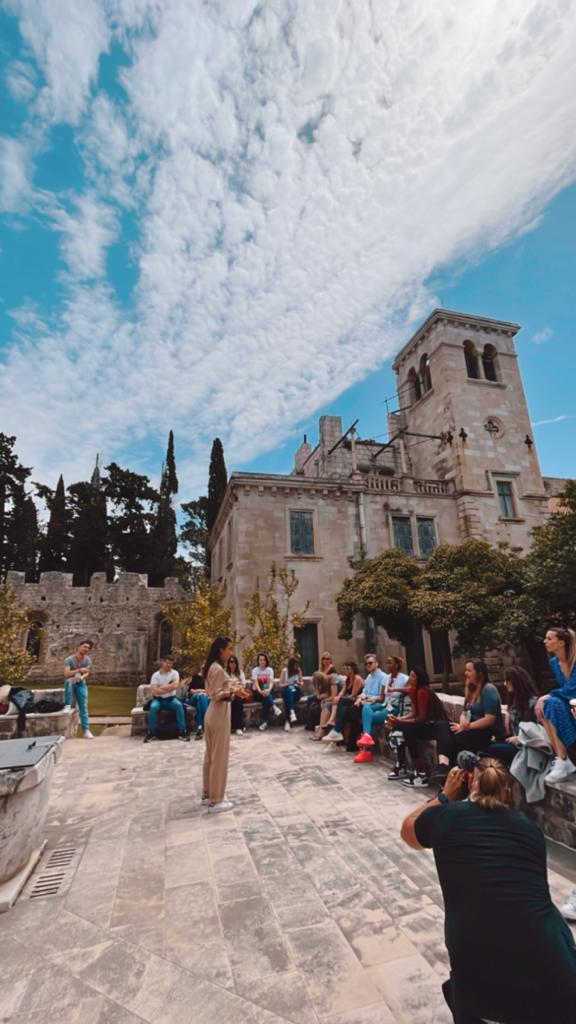
Even the resident peacocks decided to take part.
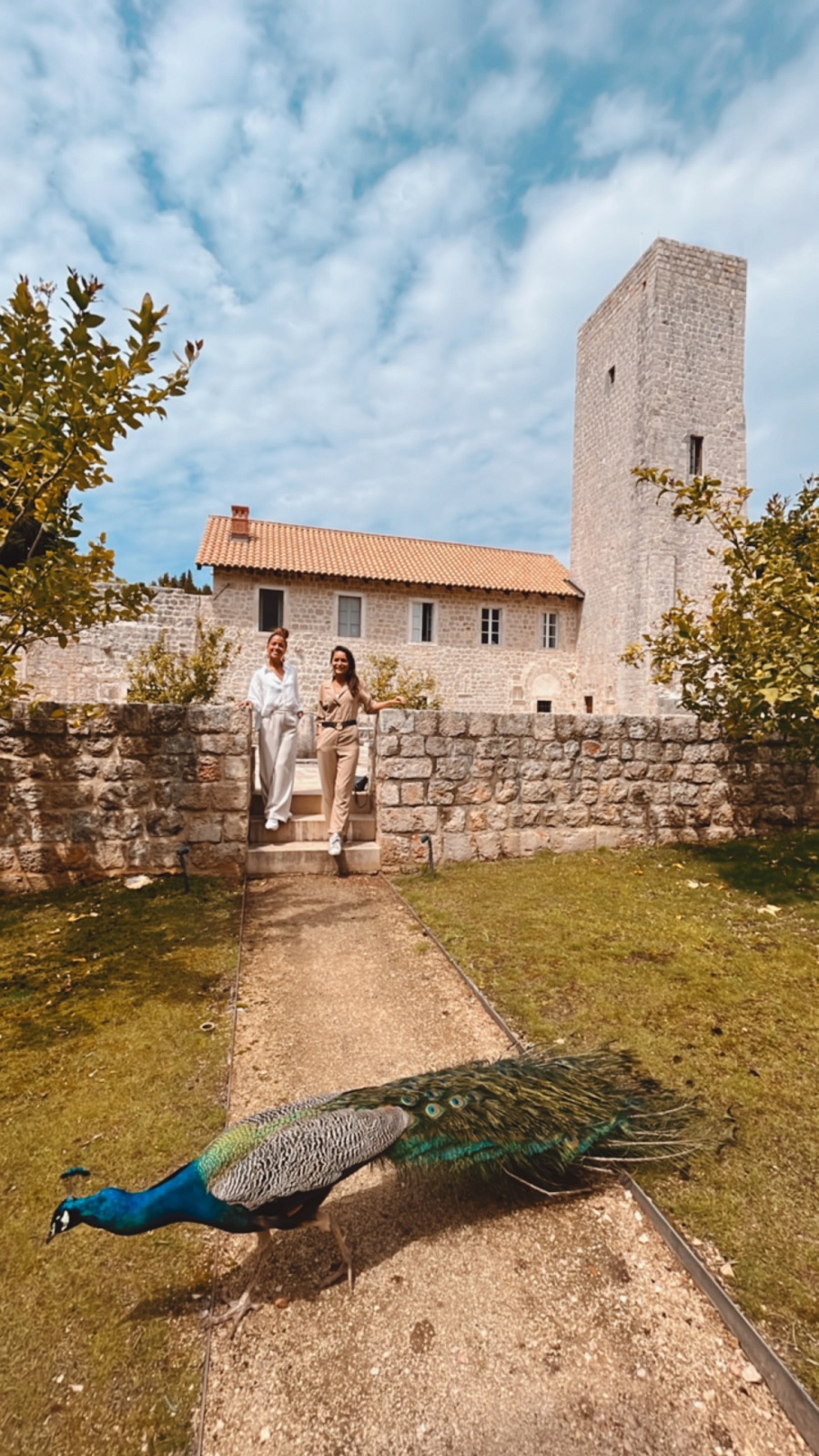
There are a couple of bars and a snack bar on Lokrum, but the best place to dine (and in idyllic botanical surroundings) is Lacroma Restaurant, a short walk up from the ferry. There is an excellent local menu, and the gin combinations with local herbs are a definite trip highlight.
And then, at the end of the perfect day in nature and relaxation, time for the short and picturesque journey back to Dubrovnik for the evening entertainment. Dubrovnik Beyond the Walls is indeed a magical place.
Tickets to enter Lokrum, including the return boat journey, are 200 kuna.

Dubrovnik beyond the walls, a new way to look at the Pearl of the Adriatic. And with so many different options available, tailor your Dubrovnik experience to your specific needs.
To learn more about the Beyond the Dubrovnik Walls series, follow the dedicated section.
Lokrum, Dubrovnik's Island Conference Pearl for Work. Place. Culture.
May 17, 2022 - Continuing our look at the recent Work. Place. Culture. conference - and conference locations in Dubrovnik, a short trip on Day 3 to a conference destination which sets Dubrovnik apart - the idyllic island of Lokrum.
All the World's a Stage, said Shakespeare. But I wonder how The Bard would have rated Dubrovnik on that stage?
Although I have visited the city many times, the Work. Place. Culture. conference earlier this month showcased the city in a new light for me, adding yet one more competitive advantage to this magical destination already blessed with extraordinary history, heritage, beauty and personality. The event design and venue selection by organiser Saltwater Nomads, brought an extra dimension to the conference.
The conference (a collaboration between the City of Dubrovnik, Dubrovnik Tourist Board, Saltwater Nomads, Total Croatia News, Digital Nomad Association Croatia, and Dubrovacka Bastina), which brought together leading voices and destinations in the world of remote work, was based in the former quarantine quarters of Lazareti, conveniently located a few metres from the historic old town and Banje beach. But the dynamic and enterprising programme took advantage of the fabulous surroundings to showcase the magic and diversity, demonstrating that a Dubrovnik conference offers much more than the presentations between four walls.
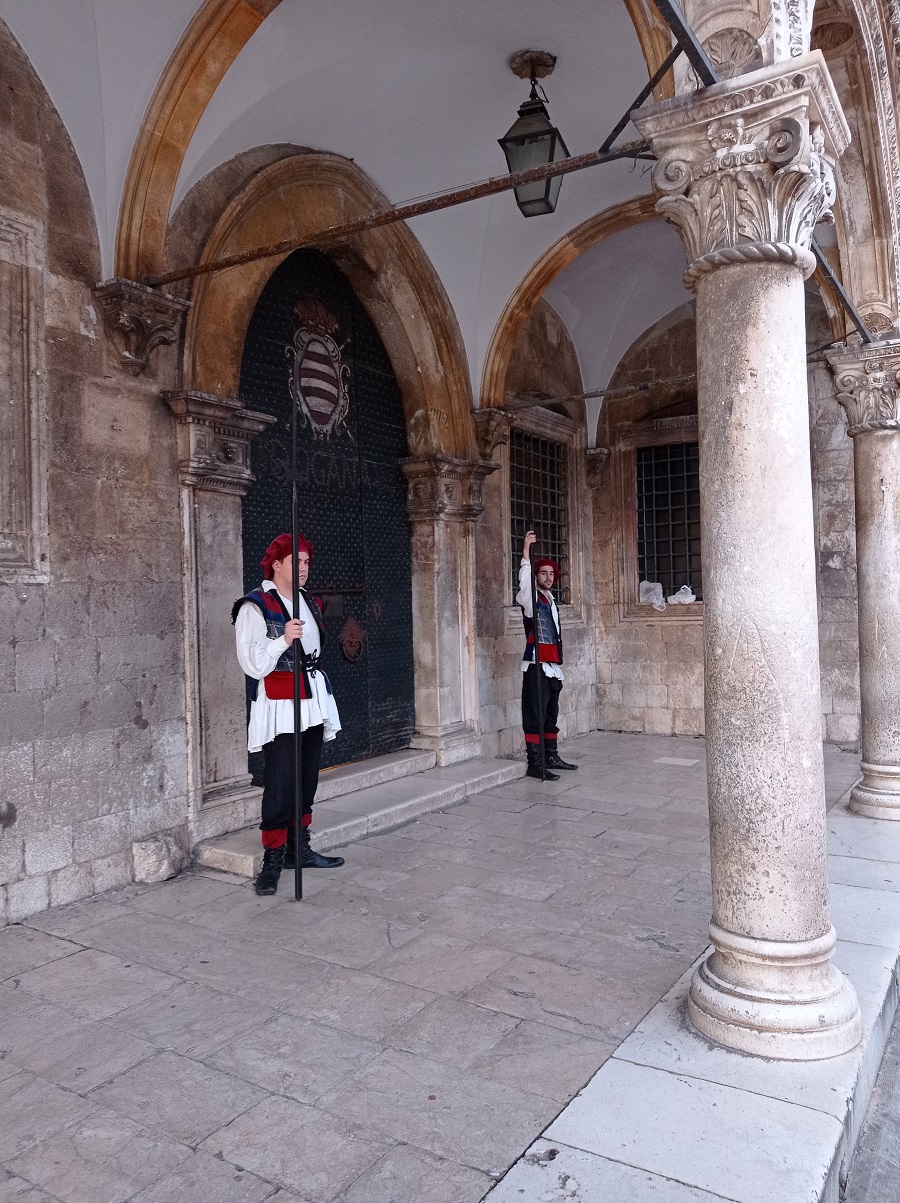
From the opening welcome at Sponza Palace (sponsored by the Croatian National Tourist Board) to a keynote speech on the UNSECO Old Town walls, panel at Banje beach, and pre-dinner cruise on a 16th-century wooden sailboat, the surroundings provided as much stimulation as the excellent speakers. But Day 3 promised to be even more special - workshops at one of the very finest places in all Croatia and a veritable jewel in Dubrovnik's tourism armoury - the island of Lokrum.
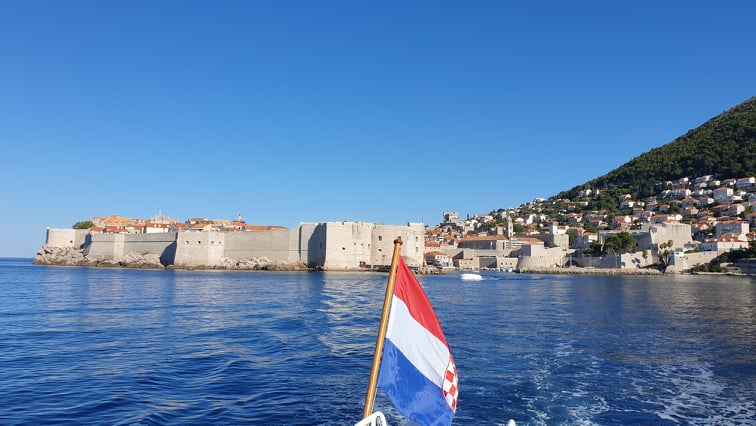
As if Dubrovnik did not have it all already, a short 10-minute boat ride on a fully-renovated 50-year-old wooden boat took participants to what is the second most popular attraction after the historic walls. And yet it never seems to be overcrowded.
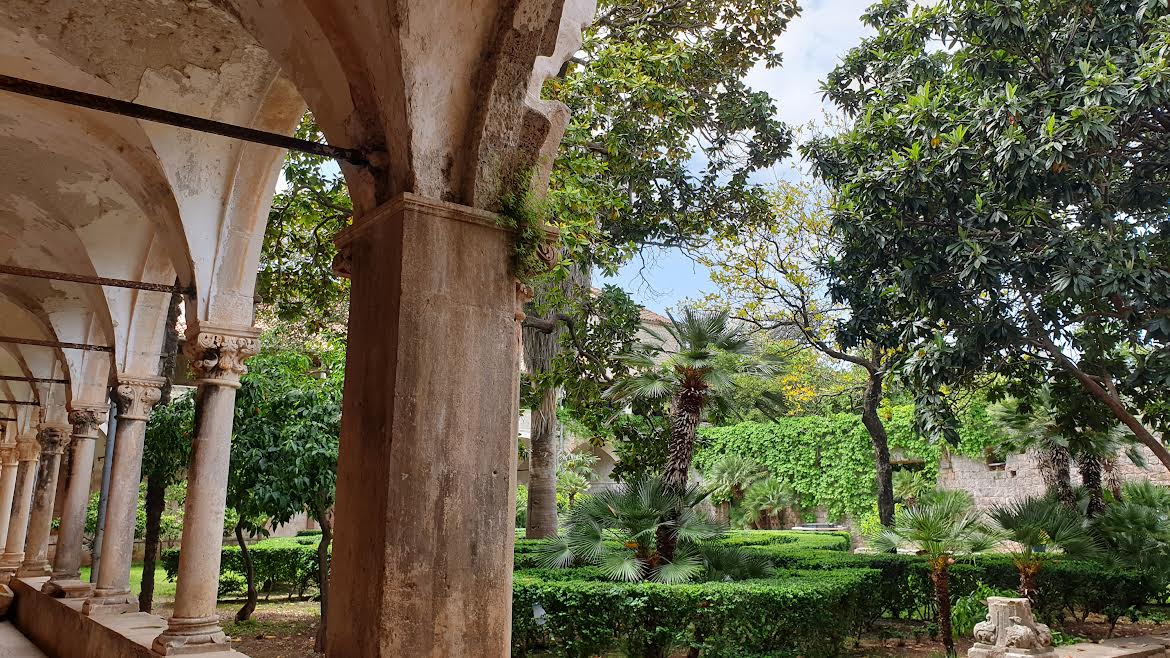
Easily the cleanest island I have come across in Croatia (I have never seen any rubbish there), Lokrum is a haven for those escaping the crowds escaping the city (the trip was sponsored by Lokrum Nature Park), but with plenty to offer visitors, including the most peaceful and picturesque workshop locations, as Yvette Pelgrom of Lifebook discovered as we went to scour a location. Where else in the world could you hold a workshop in the cloister of a monastery turned Game of Thrones filming location, with strutting peacocks providing an audio backdrop just metres from an original GoT iron throne? I asked Yvette how it had been for her:

"I was really honoured to host a session on “How to Consciously Design Your Work & Life” on the dreamy island Lokrum. During this session, I guided them through a powerful framework which has been successfully proven to change lives of hundreds worldwide. This got them to unravel core beliefs that guide (and sabotage) their current choices and lifestyle, in order to craft their practical strategies on aspects like career and health.
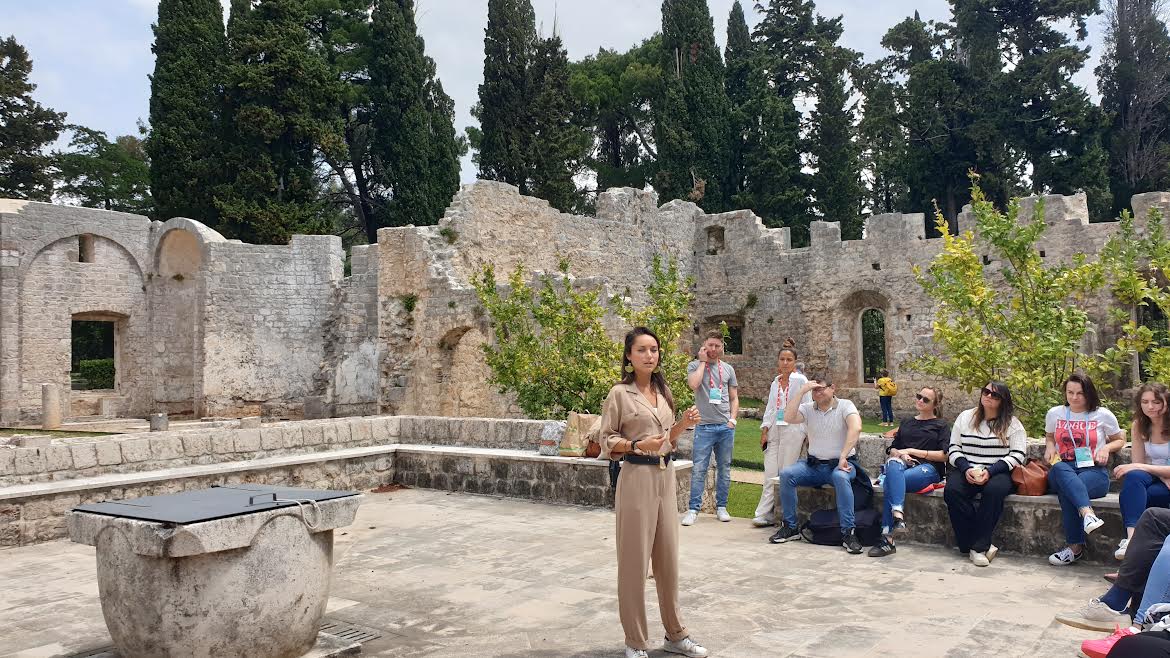
"It was really beautiful to experience their proactiveness and how participants, now still days after, are reflecting and acting on it. Mission accomplished! And what a memory altogether given this was hosted at Lokrum Island. Picture stunning botanical gardens, crystal clear water and peacocks around! The island definitely did its magic, too. Lokrum was one of many outstanding highlights for me and when you visit/stay here, the perfect getaway to retreat for walks, strolls, reading, swims and leisurely sunbathing."
There are no cars on Lokrum, no inhabitants (save two firemen from Lokrum Fire Brigade), and smoking and plastic are banned. The botanical gardens are a delight, and Dubrovnik schools often hold classes out in the open on Lokrum. As do - increasingly - conferences such as Work. Place. Culture. I asked Yvette how the conference had been for her.
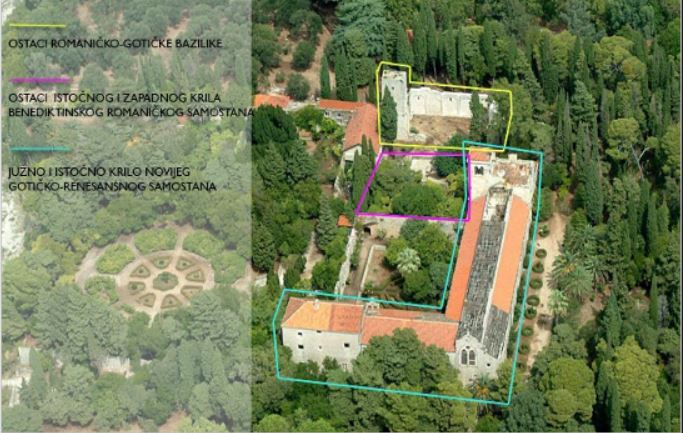
"Inspired! My impression in one word. I myself am highly conscious of how I design life and work, greatly as I was raised and worked across the globe. At the conference however I got to connect with many - who blew me away with inspirational examples within this realm of flexible working and living. I left excited having met peers in the same industry, connecting with other leaders who prioritise wellbeing and freedom while investing devotedly in their talent, - and all the way to connecting with millennials with a curious hunger to explore all corners of the world while making an impact.
"Moreover, the talks gave valuable insights on new advancements around remote working, sustainability around travel and DEIB (Diversity, Equity, Inclusion & Belonging). And… it was fun! A dynamic schedule from talks, sunset dinners, boat trip and being shown around in special Dubrovnik on the walls where Games of Thrones were filmed. Time flew!"
After lunch on the island, it was the turn of Mandy Fransz, one of LinkedIn's top 10 voices on remote work, to lead the afternoon session:
"After opening the Work. Place Culture. conference with my keynote "How To Work Remotely & Travel As A (Part-Time) Digital Nomad" I was honored to end the conference with the final session about "How To Build Your Personal Brand on LinkedIn" on beautiful Lokrum island -- a Game of Thrones venue! During this session, I shared my top tips about how to optimize your profile to truly showcase your authentic, online personal brand to attract your dream (remote) business opportunities. (pssst... download your free LinkedIn Banner Image template here to get started!).
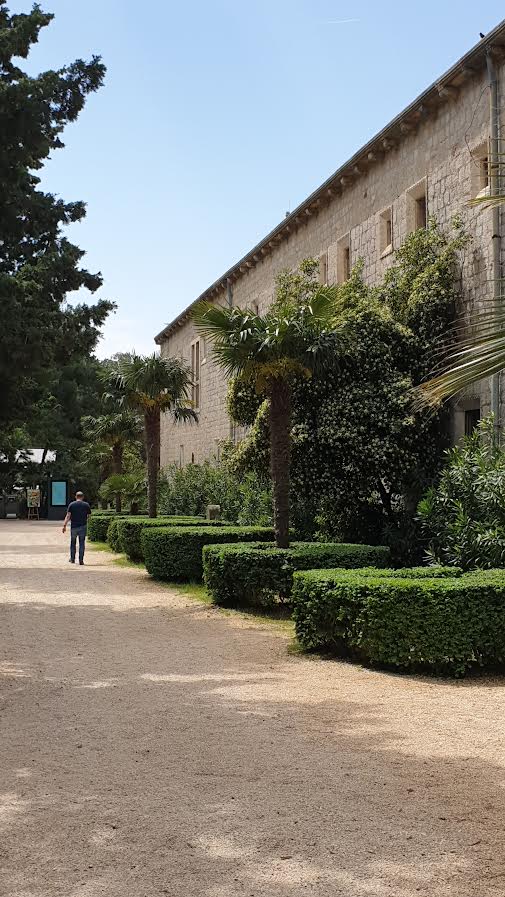
"Lokrum is truly a magical place with a botanical garden surrounded by nothing but nature, the ocean, and the beautiful (and, loud!) peacocks. It'd definitely a must-visit when you're in Dubrovnik and a perfect way to escape the hustle and bustle -- it's been a fantastic experience hosting a session here!"
The session over, participants went off to explore the island before heading back to the city for a farewell dinner. And there is plenty of heritage to explore. Dubrovnik is the birthplace of quarantine, and the remnants of a large quarantine complex (100m x 100m) can still be visited today. It is also the island where King Richard the Lionheart took shelter from a savage storm, vowing to build a church at the location which saved him - the church he donated was the pre-cursor to the current Dubrovnik Cathedral.

Others headed for a swim at Lokrum's very own Dead Sea, once a cave but still very much part of the Adriatic Sea. Mandy also reflected on the last few days at Work. Place. Culture:
"I absolutely loved the overall conference -- from the stunning event venues including Lazareti (see photo below) and Lokrum island, the fun activities including a Karaka sunset tour and "Netwallking" the Dubrovnik Walls, and of course the world-class line-up of speakers full of interesting keynotes, workshops and panel discussions with topics ranging from wellbeing, sustainability, and DEIB (Diversity, Equity, Inclusion & Belonging). It's been an honor to have been a part of this event and to finally meet many industry peers and (virtual) friends in-person -- I already can't wait for next year's event!"
While the conference has now finished, both Mandy and Yvette are still in Dubrovnik, currently enjoying the role of Digital Nomad Ambassadors for Dubrovnik and Korcula (a programme designed and run by Saltwater Nomads), a role they are clearly enjoying:
"I'm honored to spend the next couple of weeks exploring the digital nomad lifestyle in beautiful Dubrovnik and Korcula as an Ambassador," said Mandy. "I am currently writing this from our wonderful home office set-up at our big, sunny terrace with a breathtaking view across Old Town and Lokrum Island. We start our days doing a workout at sunrise, do a couple of deep-dive focus hours, and then we'll go for a dip in the sea or a walk outside during lunch break and after work.
(Mandy with conference organiser, Tanja Polegubic, CEO of Saltwater Nomads at Lazareti)
"For the next few weeks, we'll host a few events to bring together the digital nomad community and collaborate with co-working spaces such as Lazareti (yes, you can even work from there!) to help take the remote work lifestyle to the next level as I truly believe that Dubrovnik has the potential to become one of the most popular destinations for digital nomads and remote workers worldwide."
Yvette was also clearly excited, and with a little gift for anyone interested:
"It is such a gift to experience and contribute as Ambassador to the digital nomad scene in Dubrovnik and Korcula, sunny Croatia. We are making the most out of it, read: early wakeups, workouts with ocean view and the sun rising as it shines first on Old Town, power hours of working, sea dips to refresh, and candlelight dinners with the tasty catch of the day in the authentic alley streets in Old Town or overviewing the sea.
"And those around, stay tuned - we’re hosting events in the next ~3 weeks to connect digital nomads and locals, for leisure and business. My upcoming session on Work/Life Design will be this Friday, May 20th, at 15:00 PM. I’ll be passionately facilitating as Coach & Trainer with another aspect around Work/Life Design. Usually $1200+ but now as no-cost gift (YES!) as a humble way to contribute as Ambassador and bring together like-minded peers. I am being received with open arms so this is the least I can do! Limited spots though as it is interactive - please RSVP as soon as possible - connect on Instagram / LinkedIn / email to This email address is being protected from spambots. You need JavaScript enabled to view it.. That said, curious but not around?
"My door is open to share about digital nomad life, to connect deeper around things like Life/Leadership/Mindset Coaching or... to have you join one of the upcoming wellness & personal development retreats in 2022 in London/Amsterdam/Lisbon!"
So what do you say, Mr. Shakespeare: if all the world is a stage, would Dubrovnik and Lokrum take centre stage? Learn more about idyllic Lokrum on my first visit a few years ago.

And there the Work. Place. Culture. conference might have ended, had the energy not been so positive. Energised by the Lokrum experience, conference speaker Dr. Irene Cop offered to hold an extra session the following day over brunch back in Dubrovnik. In Irene's own words:
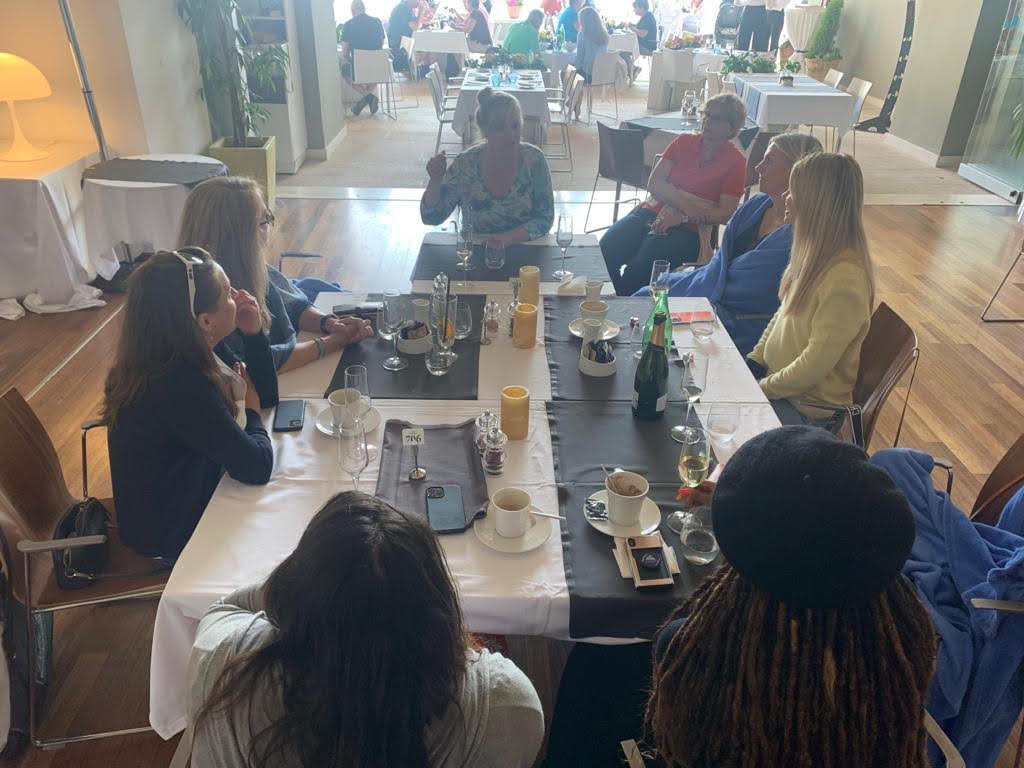
"It was such a pleasure to lead a brunch workshop on SOS Tools for Success Over Stress at the Work. Place. Culture. Conference in Dubrovnik. You can’t beat transformation, great people and wonderful food for the the perfect recipe of an awesome day!
So many digital nomads and remote workers (and those who want to be part of the Great Resignation) are still feeling lonely, stressed and miserable.
Perhaps they’d thought that, if they could just make this switch to a freer lifestyle, then they’d be happy.
The thing is that success, happiness, and freedom are inside jobs first.
Why?
You can’t be stressed and in success mode too.
So, the first crucial step that most people miss is to use fast, easy, powerful SOS tools to shift out of survival mode.
Only then can you think logically, come up with the creative solutions needed, and act on them to succeed.
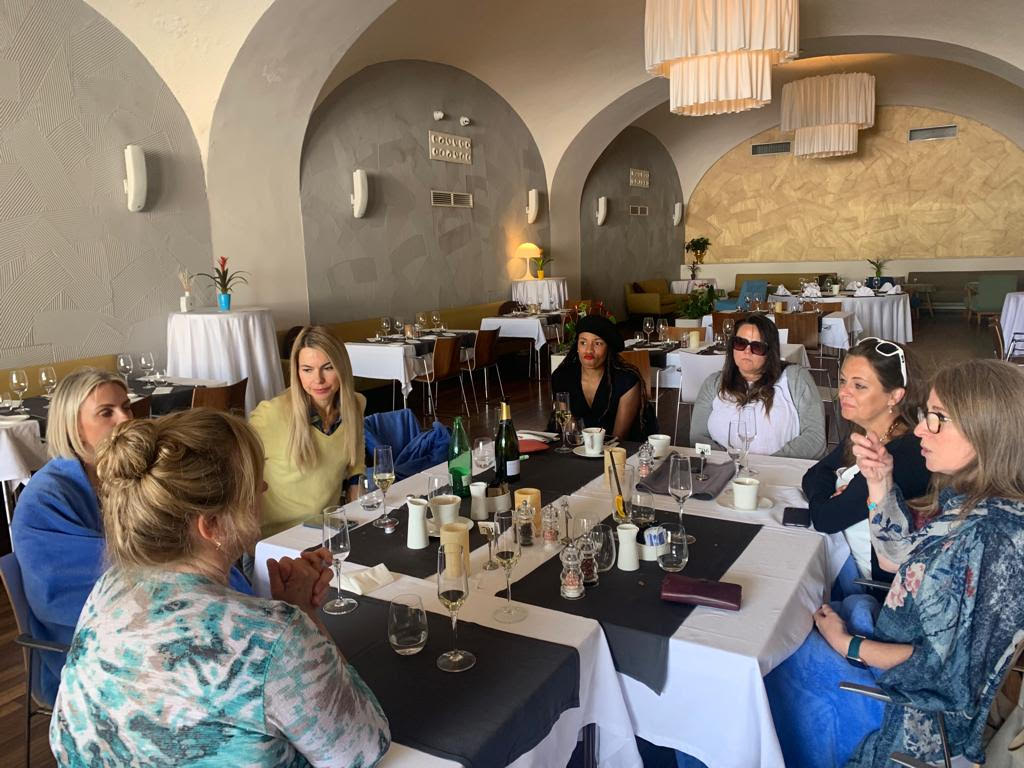
Throughout our hands-on session, everyone learned several SOS tools to make them feel calm, cool, and collected in times of crisis.
It was the perfect complement to the other amazing sessions that showed the conference participants how to create a powerful vision of the life they wanted, and then practical ways to take action and make that vision reality.
I learned so much from attending the different sessions myself, and I was jazzed to be able to add value to such a phenomenal conference!"
For more information about Work. Place. Culture. in Dubrovnik, visit the official website.
For an overview of the opening from Sponza Palace.
Day 1: Dubrovnik Connects as Global Remote Workers Bond at Work. Place. Culture
Day 2: Dubrovnik Showcases Its Credentials, as Nomad Trails Head East in Europe
For more news and features on digital nomads in Croatia, follow the dedicated TCN section.
Trsteno Arboretum Education and Multimedia Centre Newly Opened
October the 18th, 2021 - Trsteno Arboretum is one of the most beautiful little places hidden away on the southern Dalmatian coastline to visit. Filled with rich plantlife and boasting million dollar views across the Adriatic Sea, it's the perfect place for a recharge. The brand new Trsteno Arboretum Education and Multimedia Centre will only add to its allure.
As Morski writes, as part of the "Historical Gardens of the Dubrovnik area" project, the Trsteno Arboretum Education and Multimedia Centre was officially opened, having been partly financed by European Union (EU) funds.
The brand new centre will contribute to the interpretation of the arboretum's stunning natural heritage, work to further increase the tourist attractiveness of the area and the development of the local economy. There will be education sessions and workshops for locals, tourists and visitors of all ages on the traditional cultivation of olives and vines, the use of medicinal and aromatic plants, ornithofauna and entomofauna of Trsteno Arboretum and the role of forests in the reclamation of negative environmental changes.
The new Trsteno Arboretum Education and Multimedia Centre was built with ''being green'' firmly in mind, meaning everything involved sustainable procurement, which is shown in the use of indigenous materials and products, such as wooden joinery (windows and doors), stone facade finishing, wooden pergola constructions on terraces and so on. As part of the project, a thematic-educational trail was also fully arranged in the olive groves of the Arboretum.
The second main activity of the project has also now been announced, and that involves the procurement of a ship and the opening of a new ferry line that will connect Trsteno Arboretum and the island of Lokrum which lies just across from the City of Dubrovnik and will likely prove extremely popular with nature lovers needing a breath of fresh air away from the hustle and bustle of Croatia's tourism Mecca. The aim of the project is to preserve local biodiversity, encourage the sustainable use of natural heritage and promote its cultural and historical values through the interpretation and presentation of protected natural heritage, thus contributing to sustainable development at both a local and regional level.
The total value of the project stands at 18,289,422.37 kuna and most of the grants for it have been provided from the European Regional Development Fund. In addition to the project beneficiary, the Croatian Academy of Sciences and Arts, the Lokrum Reserve Public Institution, the Dubrovnik Tourist Board and the Dubrovnik Art Association without Borders (DART) are all participating in the project.
This beautiful arboretum is otherwise very well known for its historical parks and its impressive and vast collection of Mediterranean and exotic plant species. It was founded in 1948 on the site and base of the historic country estate of the Dubrovnik noble family Gucetic-Gozze, dating from 1494, and is protected by law. Covering an area of 28 hectares, it unites several different units: a historic Renaissance park with a summer house, a historic neo-romantic park, a historic olive grove, and natural vegetation boasting numerous tree species from near and far.
For more, make sure to check out our lifestyle section.
Best Nudist Beach in the World is on the Island of Lokrum
October 10, 2021 - Up to 100 nudist beaches and bathing spots around the world were evaluated in a survey conducted by the My Dating Adviser portal, in which the island of Lokrum ranked first for its quality and accessibility, and is thus considered the best nudist beach of the world.
As many as 100 nudist beaches and bathing places around the world were evaluated in a survey conducted by the My Dating Adviser portal, in which the island of Lokrum came first as the best nudist beach, reports Turističke Priče. The quality of the beach, safety, weather, and the price of the hotel were evaluated, and Lokrum received the best evaluations for the safety and quality of the beach.
Lokrum is the closest to the historic city center of Dubrovnik, and centuries of rich history, legends, and stories, the magic of the sea and nature renew old loves or bring new ones. But apart from that, Lokrum became famous after the Game of Thrones series. Lush vegetation, intoxicating scents, and the song of crickets "played" the gardens in the Game of Thrones where "those of pure blood" ruled. Numerous tourists walked the trails walked by Khaleesi and her powerful host Xaro Xhoan Daxos. And while on the island, you can also sit on the Iron Throne, which is located in a Benedictine monastery.
On the list of the 100 best nudist beaches, Lokrum is located above the beach Spiaggia della Lecciona from the Italian province of Lucca, and the Australian beach Maslin Beach .
In the description of the beach, My Dating Adviser states that if you spend time in Dubrovnik, the island of Lokrum is a great place to visit, only 10 minutes away by ferry and that it is a small, uninhabited island, which provides a haven for nudists.
''Here you can enjoy the impeccable landscape, national parks, and clear sea. The island consists mainly of rocks, so be careful with pieces of stone. This island also has a natural salt lake where you can relax like a jacuzzi'', the text explains about the now considered best nudist beach in the world.
In addition to Lokrum, this list includes three other destinations from Croatia: Punta Križa on Cres in 13th place, then Valalta near Rovinj in 16th place, and Sovinje Beach in Tkon in 21st place, which was rated the best in the beach quality category.
Nudist beaches in Croatia have been popular for a long time now. The country with such an abundance of hidden bays and beaches is nothing short of perfect for all those looking to get in touch with nature on their holiday. For more about the history of nudist beaches in Croatia and detailed information, be sure to check Total Croatia's guide here.
For more on travel in Croatia, follow TCN's dedicated page.
Totems and Sensory Technology Put into Function on Lokrum Island
September the 6th, 2021 - One of Dubrovnik's most visited gems, the nearby Lokrum island, has undergone some changes of late. Totems and sensory technology devices have been placed across the uninhabited southern Dalmatian island, providing for a more interactive stay when visiting.
As Morski writes, as part of the project "Historical Gardens of the Dubrovnik area", activities from group 1 of ICT procurement were completed. Structured cabling carrying a total value of 84,513.00 kuna and group 3: the establishment of a unique IoT platform, the installation of sensor infrastructure with analytics and the presentation and installation of an interpretation point in the historical gardens of Lokrum island, carrying a total value of 1,214,880.00 kuna.
Structured cabling involves upgrading the existing fiber optic and the local computer network (LAN) in order to connect all of the functional facilities on Lokrum island into one unit and integrate them over the optical network into new digital services.
An advanced system for monitoring environmental components on Lokrum island, which is known for its botanical garden, has been introduced at six different locations. These are sensors that measure both air and sea quality and work to detect smoke. The sensor infrastructure is connected to an information and presentation panel which, in addition to providing timely information on the state of the environment, provides information on the natural values of Lokrum island, the sailing schedule and the project itself.
A sensor has also been installed to monitor the number of visitors at any one time on the small island with the aim of the more efficient use and management of protected areas. The completion of these activities established a technological environment that will ensure the long-term strategic development of Lokrum island as an intelligent/cognitive system, with efficient management of its own capacities and the preservation of natural heritage and the environment.
The "Historical Gardens of the Dubrovnik area" project is otherwise a three-year project with a total value of 15.5 million kuna. It was applied for and accepted in a restricted grant procedure for the promotion of sustainable development of natural heritage and co-financed by the Competitiveness and Cohesion Operational Programme for the financial period 2014-2020 of the European Regional Development Fund.
It contributes to the creation of new experiences for visitors and the raising of awareness of the need and importance of nature protection, and by using the modern technologies of interpretation and monitoring the environmental components, it enables cooperation with both Croatian and foreign scientific institutions and additionally responds to modern requests for new experiences.
The purpose of the project is the sustainable use of natural heritage and the management of protected areas through the interpretation and presentation of protected natural values, with the long-term goal of contributing to sustainable socio-economic development at the local and regional level.
For more, make sure to check out our lifestyle section.
People also ask Google: How Many Days Should I Spend in Dubrovnik?
February 26, 2021 - Continuing the TCN series answering the questions posed by Google's People Also Ask function - how many days should I spend in Dubrovnik?
Dubrovnik, the walled city Lord Byron once called the 'Pearl of the Adriatic,' has dazzled tourists for decades.
Historians claim that tourism first really set off in this picturesque walled city in 1945. Its inclusion in UNESCO's World Heritage List over 30 years later only heightened its fame.
The breakup of Yugoslavia in the early 1990s pushed Dubrovnik into the spotlight once again, however not for its grandeur and charm, but as the target of the Yugoslav People's Army during the Seige of Dubrovnik. Intensive shelling blasted the medieval city walls, and over two-thirds of buildings in the historic core were damaged. The tourist jewel in pieces.
But even after its darkest days, Dubrovnik shone again thanks to an extensive reconstruction between 1995 and 1999. The Adriatic Pearl was polished to its pre-war perfection, and it has been Croatia's champion of tourism ever since.
I first visited Dubrovnik on my first trip to Croatia in 1996, not yet six years old and just after the war. I have photos of me striking poses on Stradun, slurping ice cream melted from the hot summer sun, and chasing pigeons around St. Blaise Square. The city's monumental effect on me as a child never dwindled, and its magic only grew as I got older.
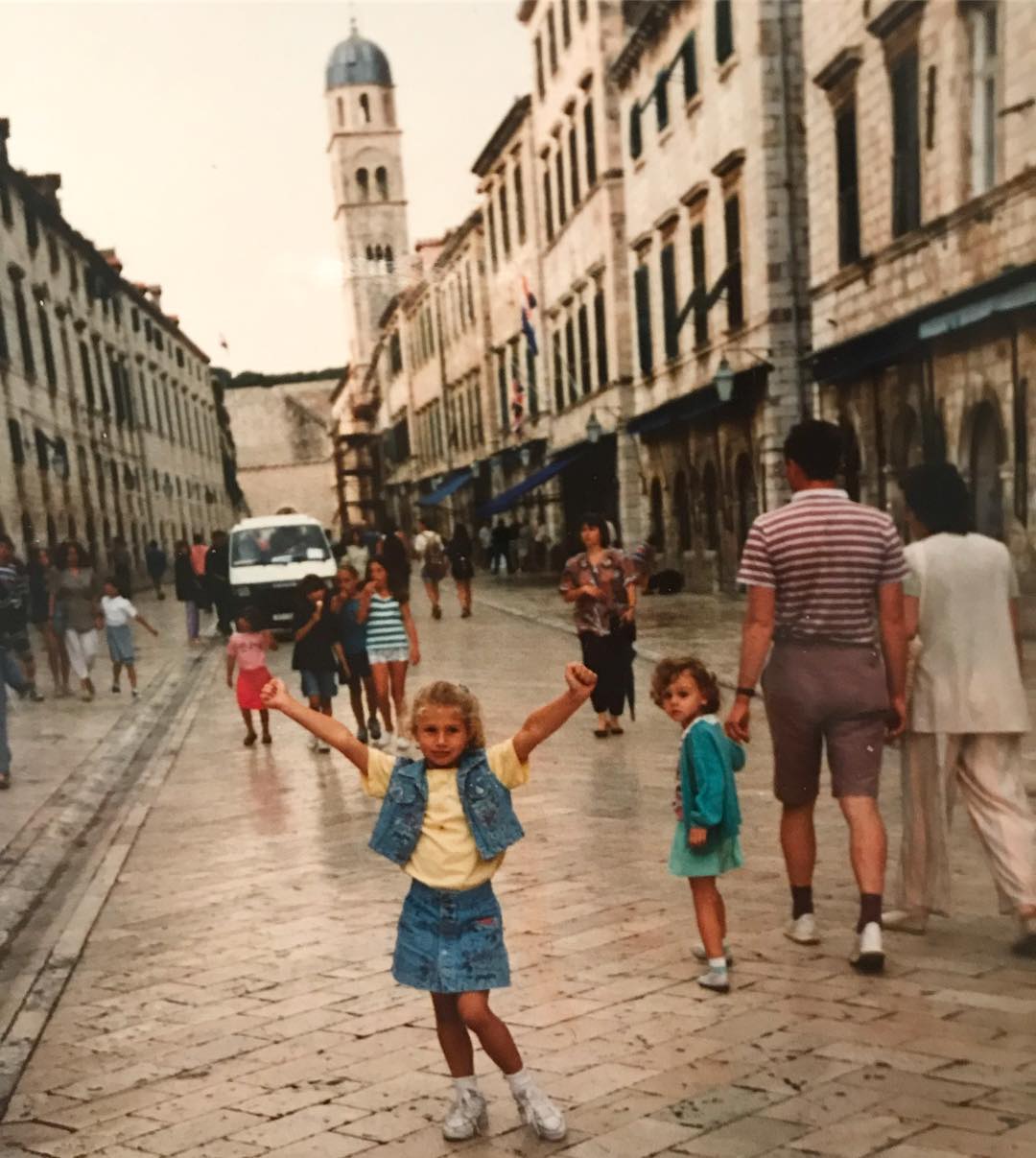
As a teenager, I would dream of visiting the baroque city during month-long stays in my mother's village of Kosa, just outside Metkovic and only 45 minutes from Dubrovnik. On Dubrovnik day trips, I begged my mother to dress up with me for fancy fish lunches and sunset gelato. It was my favorite Croatian city, without a doubt.
We have brought dozens of friends from the US to Dubrovnik, staying for days in old-town apartments we wished we maybe hadn't booked after schlepping oversized luggage up 100 steep steps. But once the golden hour lit up Stradun, nothing else mattered - and the magic of Dubrovnik was infectious.
But that was over a decade ago.
If Dubrovnik wasn't already popular then, today is it one of Europe's top travel destinations and a summer haven for cruise ship tourists who pile into the town for a day. A victim of 'overtourism' next to Venice before the COVID-19 pandemic hit, the city's charm has often been met with critique and tourists wishing they hadn't visited in the summer after all.
But there are ways to beat the bustle and ensure you get the most out of what Dubrovnik has to offer, so you too can experience its perpetual allure. Just read carefully.
How Many Days Should I Spend in Dubrovnik?
While I thought it was tough to decide how many days you should spend in Split, quantifying it for Dubrovnik is infinitely harder. If you asked me in 2006, I would say a week, in 2010, maybe 3 days, and in the last couple of years, I would say no more than a day.
Though I would hardly agree with that now.
Factoring the potential of summer crowds (though we can't predict they'll return so fast after COVID-19), the key to Dubrovnik is taking your time.
How long should I spend in Dubrovnik to see the Old Town?
Truth be told, Dubrovnik's center looks much mightier than it really is. This rather compact old-town town could be explored on a speedwalking tour in just a few hours, but that's not as much fun.
To really explore the cracks and crevices of Dubrovnik's old town, I'd recommend one day - minimum. This gives you time to wander and stop to examine numerous historical attractions like Onofrio Fountain, built in 1438, the Franciscan Monastery (which is also home to Europe's oldest pharmacy), and the baroque Church of St. Blaise (circa the early 1700s).
Don't forget the Rector's Palace, which held the Rector's seat of the Republic of Ragusa, nor can you miss the Romanesque-style Cathedral of the Assumption, designed by Roman architect Andrea Buffalini, which dates back to the 12th century. The 16th-century Sponza Palace is best seen at dusk, while the 31-meter-tall Bell Tower can be used as your marker as you wander around town.
You'll certainly need time to peruse the shops hidden in high alleyways and people watch with a probably over-priced beverage on Stradun, which won't matter much to you then as you embrace the history around you.
How much time do I need to see the city walls?
Dubrovnik's main attraction, its walls, has guarded the town for centuries. Built between the 12th and 17th centuries, these defensive stone walls are almost two kilometers long and wrap around the Old Town with scenic views overlooking Dubrovnik's red rooftops and sparkling Adriatic Sea.
You haven't really been to Dubrovnik unless you've examined the city from this height, and history will continue to reveal itself at every tower, fort, and turn.
By entering from the busy Pile Gate, you'll find that walking the walls will take around two hours, that is, if you really take your time to enjoy it. Should you choose to visit in summer, it's best to book in advance and book to tour the walls in the morning - you'll thank me later.
Because you'll likely need to rest after this wall-workout, don't rush to see the next thing - take the day in Dubrovnik to relax at a cafe or beach!
How many days should I spend in Dubrovnik to visit Mount Srd?
One of Dubrovnik's top recommendations is Mount Srd, which you can reach in style with the cable car (5-10 minutes to the top), by hiking (about an hour), or driving (13 minutes from Pile Gate). Offering incredible panoramic views of Dubrovnik and the Adriatic, no matter which way you choose to make it to the top, you'll be rewarded with a panoramic restaurant, buggy tours, and the Croatian Homeland War Museum, which exhibits the Croatian War for Independence in haunting photographs from 1991-1995.
Depending on what you choose to do, you could make Mount Srd a full-day activity!
Can I see everything on Lokrum in one day?
Just 15 minutes by boat from the Dubrovnik Port is Lokrum, a small green island oasis that dates back to pre-historic times (1023). The perfect day-trip idea, Lokrum, is a natural habitat that boasts a botanical garden, medieval Benedictine monastery, nudist and rocky beaches, and even a Dead Sea-like saltwater lake.
You can easily spend the day on Lokrum to beat the summer heat and crowds. This forested wonder even has a restaurant!
Can I see the Elaphiti Islands in one day?
I didn't visit the Elaphiti Islands until maybe my 6th or 7th time in Dubrovnik, and I'm so sorry I didn't go sooner. The Elaphiti Islands, which get their name from the Greek word elafos, are a small archipelago of several islands slightly northwest of Dubrovnik. The three most famous are Kolocep, Lopud, and Sipan, populated by less than 1,000 people in total, though 13 islands make up the archipelago.
Tranquil, forested, and mostly car-free, the Elaphiti Islands offer a picturesque escape from the busy city. While you can visit Kolocep, Lopud, and Sipan by ferry, the timetables could get a bit tight, so booking a private speedboat tour for the day ensures you get the most out of your adventure - and lunch at an island konoba to boot!
How many days should I spend in Dubrovnik if I'm a Game of Thrones fan?
Calling all Game of Thrones fans! If you didn't know by now, Dubrovnik was transformed into King's Landing for the hit TV series, and you'll notice many famous scenes just by walking around the Old Town. For example, Cersei Lannister's steps of 'Shame!' (or Dubrovnik's Jesuit Stairs), St. Dominic Street (most marketplace scenes in King's Landing), while the Rector's Palace, Rupe Ethnographic Museum, Fort Bokar, Fort Lovrijenac, Ploce Gate and more all have their chance in the spotlight.
There are several Game of Thrones tours you can choose from, most lasting around two hours, which will not only take you to filming locations but give you the history spiel of the city, too.
You can also head 30 minutes outside of Dubrovnik to the Trsteno Arboretum, whose gardens are featured in seasons 3 and 4!
How many days should I spend in Dubrovnik, depending on the season?
Summer is without a doubt the busiest time in Dubrovnik thanks to the scorching hot sun, but that doesn't necessarily mean it is the best time to visit. Trying to do everything you want in a day or two during the summer could be an impossible task, given that long lines and crowds make many tourist activities tough to tick off. If you have time to spend in Dubrovnik in the summer, do it, and book yourself accommodation outside the bustling Old Town so you can maintain a somewhat slower summer pace.
Spring may be the best time of the year to visit Dubrovnik for various reasons - 1) usually good weather, 2) tolerable crowds, less traffic, and emptier walls, and 3) more affordable prices. Most tourist attractions are open as well, and booking in advance is probably not necessary. Summer flight schedules to Dubrovnik usually kick off in the spring, making it easier to get in and out.
Winter in Dubrovnik exposes the city's local life, which is often hard to experience any other time of the year. Dubrovnik is still enhanced by events in the wintertime, like Advent Christmas markets, its Winter Festival, and, of course, the celebration of its patron saint, St. Blaise. The weather may be cooler, but the vacant streets give the town a new kind of enchantment that only winter can bring.
Conclusion: How many days should I Spend in Dubrovnik?
Another impossible question to answer, I believe it all comes down to why you're visiting in the first place. If you want to be fully immersed in the history, culture, and beauty of Dubrovnik, do yourself a favor and don't cut your trip to one day. However, if you're only looking to walk walls to say you did it and prefer a quick gander around town, one day is plenty.
Keep in mind that the time of year you choose to visit will have a huge part in how your trip plays out. Even so, we're pretty sure you'll feel the magic no matter when.
To follow the People Also Ask Google about Croatia series, click here.
Recognition for Lokrum Botanical Garden at Croatian Design Exhibition
As Morski writes on the 15th of November, 2020, the "Lokrum - Botanical Garden" project, which is otherwise the work of Studio Sesnic & Turkovic, received special recognition at the Croatian Design Exhibition 19/20 in the category of Spatial and Graphic interventions and systems.
The awards and special recognitions of the Croatian Design Society were announced on Thursday, November the 12th, in anticipation of the online exhibition of awarded works that will be held at the Museum of Arts and Crafts in Zagreb from Saturday, November the 14th to December the 5th, 2020. A total of 497 works were submitted to the Croatian Design Exhibition, of which 294 were selected by the commission, 247 were professional and 47 were student works.
Namely, the author team of the company Normala and the design studio Sesnic & Turkovic prepared project documentation for arranging and equipping the Botanical Garden of the Lokrum Reserve, according to which the works were completed in the spring of this year.
Marko Sesnic, Goran Turkovic and Andrea Suznjevic participated in the preparation of documentation in the design segment, while Roman Silje, Milan Strbac and Tihana Vucic (Normala) were in charge of architecture. The artist Katarina Ivanisin Kardum (illustrations) also participated in the creation of the project.
To recall, the renovation of the exhibition part of the Lokrum Botanical Garden lasted six months, and began back in October 2019. Those works were performed by Araucaria d.o.o. from Zagreb, and the Institute for the Sea and Coast of the University of Dubrovnik, which takes care of the garden, actively participated in the development and implementation of the project. The rehabilitation and arrangement of existing paths in the length of 725 metres, the removal of damaged plant material and the planting of 195 new plant species with a total number of 1466 seedlings across 13 fields in the garden were performed. New urban equipment was also installed (benches, information and interpretation boards, an entrance portal, etc.)
The Lokrum Botanical Garden was founded back in 1959, and with its renovation, the Lokrum Reserve Public Institution revitalizsd its content and gave the garden a new lease of life for the enjoyment of future generations and as a basis for a new beginning.
For the latest travel info, bookmark our main travel info article, which is updated daily.
Read the Croatian Travel Update in your language - now available in 24 languages
Lokrum, a Croatian Island Free of Rubbish and Full of Magic
July 30, 2020 - A visit to Dubrvonik's answer to escaping the crowds - the idyllic and VERY clean island of Lokrum.
Dubrovnik at the moment is perfect. The tourism slowdown due to coronavirus is certainly severely affecting the wallets of the hospitality industry, but the quality of life for locals and the tourism experience for visitors to the Pearl of the Adriatic has been severely enhanced.
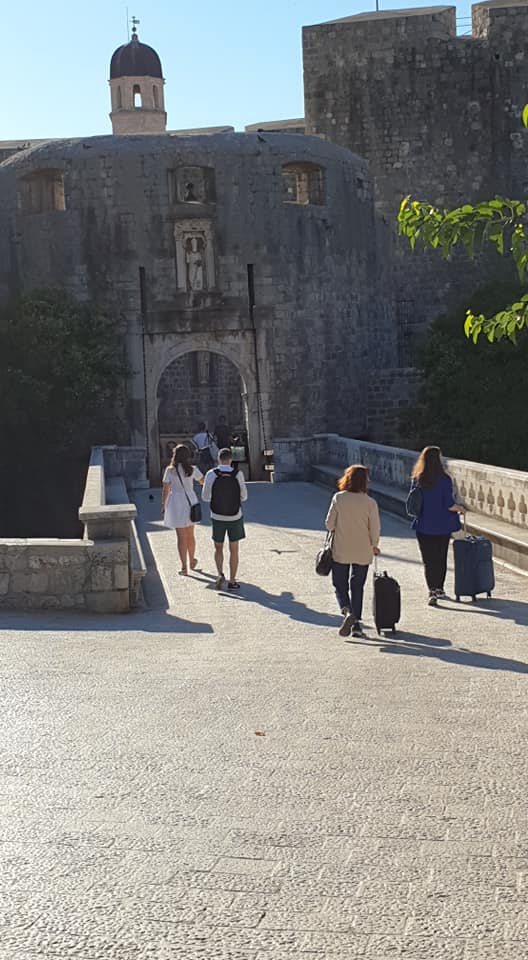
An early morning stroll into the old town last week - I almost had the place to myself.
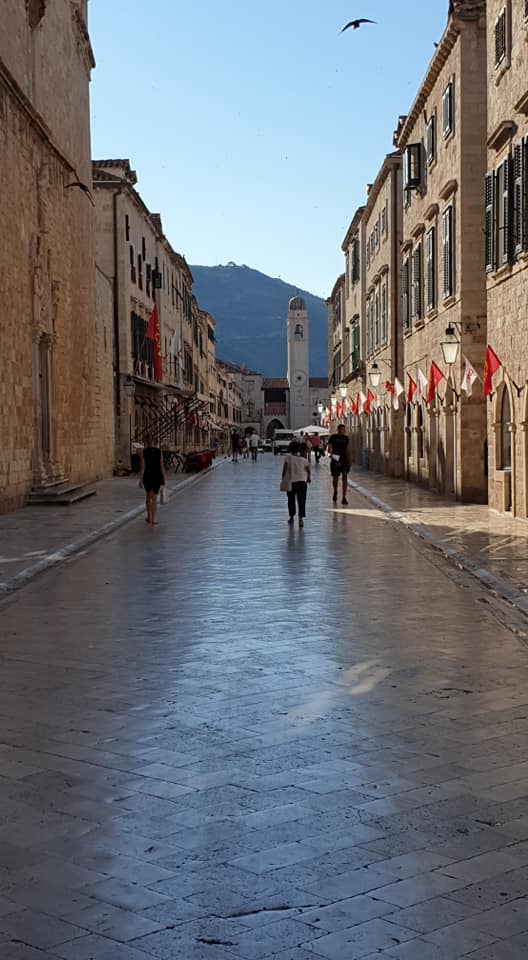
And a similar story on the most famous and exclusive street of them all - Stradun.
My destination was just the other side of the famous UNESCO walls, to the old harbour, where a 50-year-old beautifully restored wooden boat was waiting with Ivica Grilec, Director of the Lokrum Nature Reserve.

Ivica had kindly agreed to show me around the island he clearly loved deeply - that much became obvious within a minute of meeting him. Croatian tourism is full of officials for whom it is just a job. From the moment Ivica started explaining about the work and concept of the beautiful wooden boats that serviced the 10-minute ride to Lokrum from the Old Town, I knew I was in for a special tour. And so it proved.
How about this for a boat departure, as the old town disappeared slowly behind us, as Zrinka glided through the turquoise waters.

Lokrum is a popular escape for the locals from the summer crowds in the city. Indeed, it is the third most popular attraction, after the city walls and the cable car to Mount Srdj.

With plenty of Instagram moments on the way, if that is your thing.

Away from the city, in a protected bay, we reached our destination, about as far from the bustle of Dubrovnik as one could imagine. As I wrote recently after my stay on the island of Kolocep, there are a number of fabulous places just 30 minutes from Dubrovnik, but a world away. Lokrum is close to the top of that list.

The first impression, apart from the nature and tranquillity was one of order and cleanliness. In 18 years of living in this beautiful country, this was the first island I had visited which had absolutely no trash whatsoever. None. Ivica told me that they had invested heavily in the clean-up. The results are spectacular.

The main building on Lokrum is the Benedictine Monastery, which dates back to the 11th century. The Benedictines engaged in agriculture and farmed the fertile Lokrum land, producing wine, olives and olive oil, fruit, vegetables and ornamental plants.
Much of the monastery remains today, despite the passage of time and the extensive damage down in the major 1667 earthquake. This includes the 12/13th century Romanesque-Gothic basilica, as well as the 'new' Gothic-Renaissance monastery on the south side in the 15/16th century.
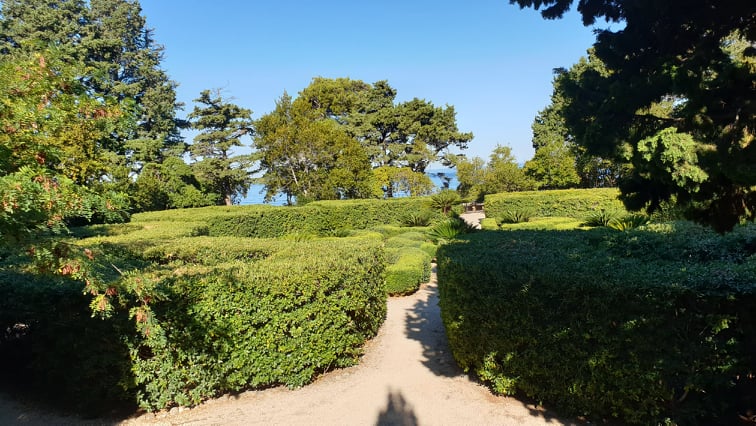
And all around amazing greenery. The botanical gardens have been fighting a losing battle with the numerous rabbits which roam freely on Lokrum. That situation has been brought under control in the last two years, and the botanical gardens are now starting to flourish.
But the monastery has some rather unexpected secrets inside...

The Iron Throne! Lokrum was an important Game of Thrones filming location, and the island welcomes many tourists each year who want to see the location and the throne.

And in the basement, something even more unusual - an exhibition dedicated to King Richard the Lionheart, who was allegedly shipwrecked here in 1192 on his way home from The Crusades. He vowed to build two churches of thanks if he survived, one in England and one on Lokrum. This church was eventually built in Dubrovnik after an official request.

And a modern-day interpretation of the Curse of Lokrum. In 1798, after the island was sold, the Benedictines were forced out. As they left, they held torches and put a curse on the island, a curse that will only be lifted when that candle wax is collected and made into candles once more.
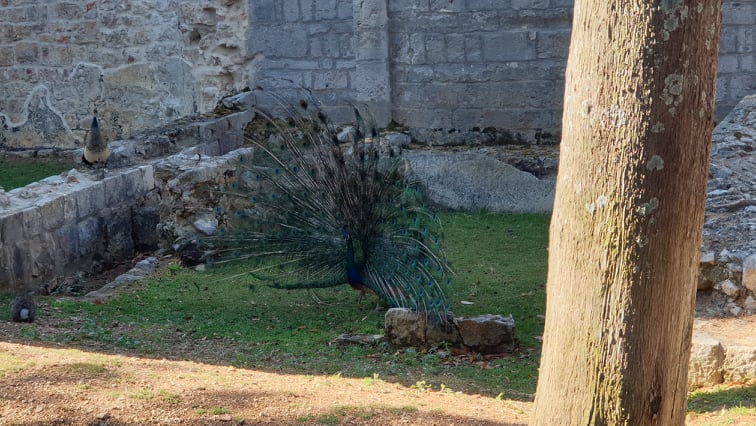
The rabbits may be famous on Lokrum, but this is also an island of elegant peacocks.
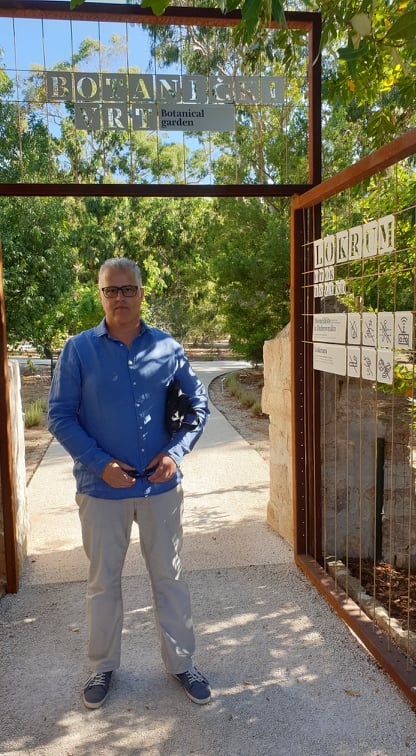
Ivica Grelic, a man with Lokrum in his heart.

It was time for Phase 2 of the tour, and my first ride in an official Croatian firefighter vehicle. And they don't come much cooler than this!
A short video clip of part of our tour to give you an idea of just how ordered everything is on this, an island with no cars.
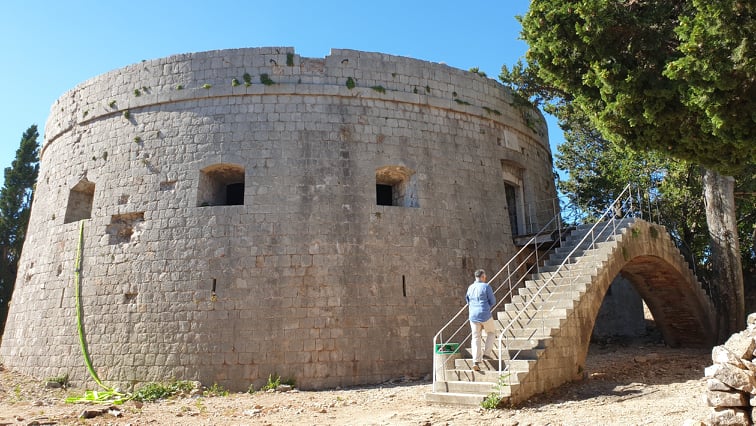
I was impressed at how well sign-posted everything was for hikers, of which there were several. Our heroic firefighting chauffeur navigated the narrow roads perfectly until we reached the top of the island and the forbidding fortress at the top.
The Lokrum fire fighters do an awesome job. Apart from providing outstanding views like the one above, standing on top of their huge water tank close to the top of the island, water hydrants are everywhere. There are five firemen by day, with two sleeping overnight. Their organisation is typical of what I found on Lokrum - a fantastic island of natural beauty shaped by a little human order and planning.
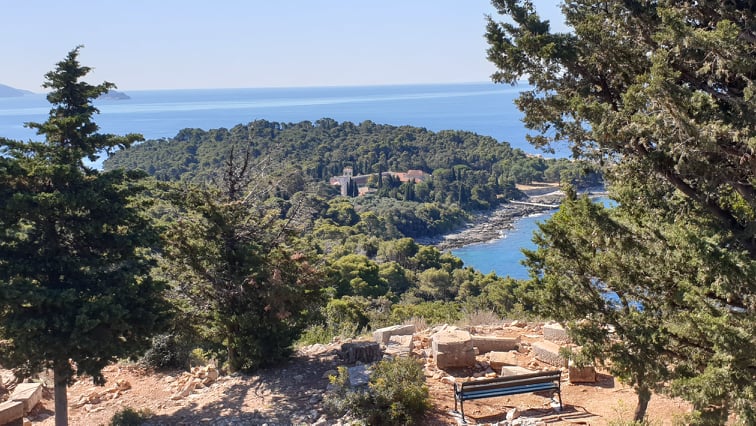
The view down to the monastery from the fortress at the top. It was hot for hiking, but I can imagine this to be a very rewarding hike in cooler temperatures.

A water tank with a view.

The tour continued with a firefighter buggy transfer to the Lokrum Lazerat, the original quarantine place on the island. Look how straight they built the stone walls in the 16th century.
Dubrovnik became the first state in the world to officially sanction quarantine facilities in 1377 after the first case of the Black Plague arrived on the island of Sipan. The first facilities were set up in Cavtat, followed soon by two islands not far from Lokrum. As with tourism in the current pandemic, Dubrovnik wanted to continue to trade while minimising risk.
My new guide Marija explained that the Dubrovnik Senate made the decision to extend the quarantine facilities to Lokrum in 1534, after which a vast complex went under construction, a square fortress 4 metres high with walls 100 metres long.

There were 150 rooms built into the walls, and you can see (from right to left) the fireplace, the air ventilation, and the toilet for one particular room. And somewhat ironically, a warning to keep your social distance in 2020 in case you might catch something.
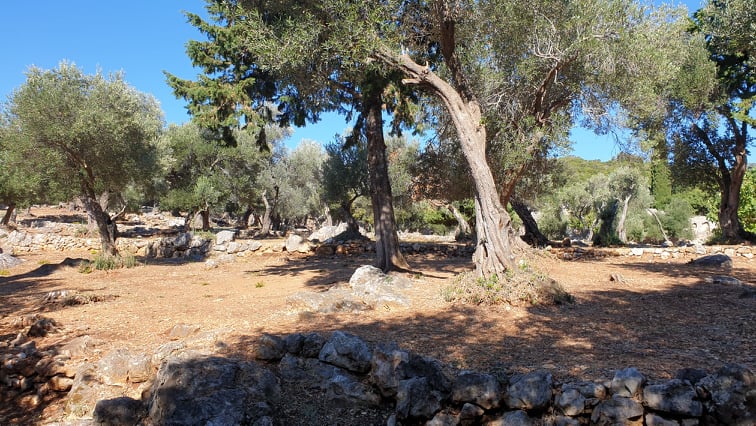
The complex was never finished after they realised that it could prove to be a launching pad on Dubrovnik if Lokrum ever got into enemy hands. Some of the stone was removed and used in the famous city walls. The most enchanting thing that remains of the Lokrum Lazerat is the 400-year-old olive grove which was started by the Beneditines.
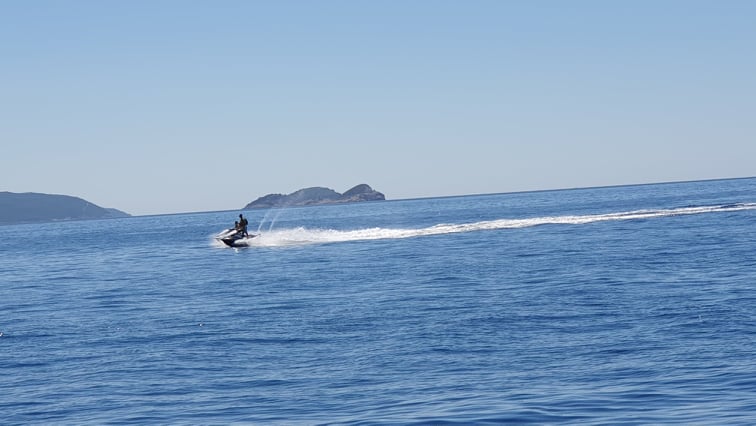
The first two quarantine islands after Cavtat in 1377.

A truly delightful spot, and one of the nice things I learned is that Dubrovnik schoolchildren visit often to learn more about the history, flora and fauna, but also to conduct occasional classes in this natural paradise.
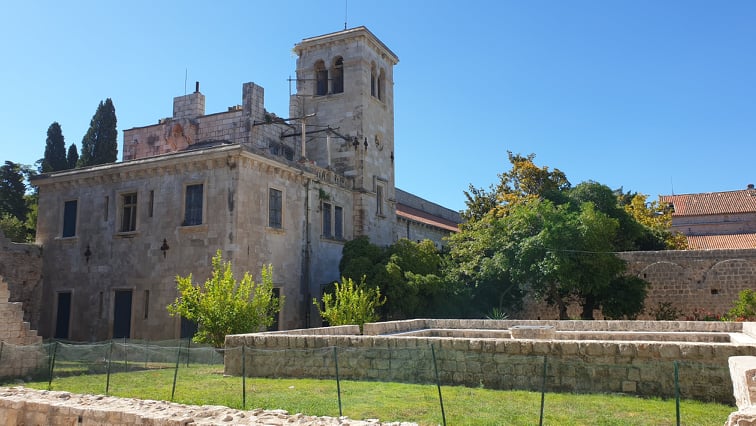
Just 10 minutes by boat from Dubrovnik Old Town.

We finished the tour with a drink by the Dead Sea - not perhaps as famous as its Middle Eastern counterpart, but a cool place to swim and actually part of the Adriatic and once a cave. An ideal spot if you want to have a drink and relax while the kids splash around.

And, right on cue, the majestic Zrinski appeared to take us back to the real world. Lokrum, a magical place devoid of trash.
To learn more of the Lokrum Nature Reserve, visit the official website.
Gorgeous Lokrum Botanical Garden to be Expertly Renovated
As Morski writes on the 31st of January, 2020, work is underway in the gorgeous Lokrum botanical garden which lies just 600m from Dubrovnik's shoreline in order to improve its condition, the newly renovated gardens, for which the island is famous, should welcome new visitors during 2020's tourist season.
As part of this restoration project, the rehabilitation and landscaping of existing paths of about 725 metres in length, the removal of damaged plant material and the planting of 195 new plant species with a total of 1466 seedlings across 13 areas in the famed Lokrum botanical garden is foreseen. New urban equipment will also be erected, including benches, information and interpretation panels, and an entry portal.
For many years, the Lokrum botanical garden has been existing in a somewhat stagnat state, mainly due to perfectly natural processes. Therefore, the Lokrum Reserve Public Institution initiated a renovation project to improve the overall condition of the garden. The contract was concluded with Araucaria d.o.o. from Zagreb, and works began back in October 2019, with a six-month deadline implied.
The Lokrum botanical garden was established back in the 1960s with the aim of monitoring the adaptation of exotic plants living in the conditions of the southern Dalmatian climate as a kind of scientific experiment.
Today, the University of Dubrovnik's Institute for Maritime and Coastal Areas takes care of the garden in the scientific and professional sense. Unfortunately, the consequences of shelling during the Homeland War and the intense adverse weather events in recent years have had a significant negative impact on the garden and the plant material, and it is necessary to now urgently take appropriate measures to properly revitalise it.
As mentioned, the Lokrum Reserve Public Institution has taken the initiative and initiated the process of restoring the botanical garden in order to preserve it, and they are investing significant resources and work in the preparation of the necessary documentation for the job, and at the same time secure the funds for the actual restoration and renovation.
On the basis of the geodetic basis of the garden, preliminary designs were created and all of the necessary permits and approvals from the competent authorities in the field of nature and cultural heritage were obtained.
Thus, back at the end of 2018, project documentation for the design and furnishing of the garden and paths was done, with the total value of the works being estimated at around 3.8 million kuna. The University of Dubrovnik is actively involved in the implementation of the project.
Make sure to follow our lifestyle page for more. If it's just Dubrovnik you're interested in, give Total Dubrovnik a follow and check out our dedicated Dubrovnik in a Page for all you need to know.
World's Largest Sailing Yacht Anchors Near Lokrum Island
September 8, 2019 - The largest sailing yacht in the world, more commonly known as 'A', has anchored in the Dubrovnik area near Lokrum island.
Andrey Melnichenko, the 97th richest man in the world according to Forbes and the ninth richest man in Russia, owns the largest sailing yacht in the world, which sailed to Lokrum island on Friday, reports Dubrovacki Dnevnik.hr.
Namely, this £260 million yacht is 142 meters long, can accommodate a crew of 54 people, 20 guests, has six rooms, eight floors, an underwater observation pod, three swimming pools and many other amenities such as a disco club and state-of-the-art equipment. Its masts stand taller than the Big Ben at almost 100 meters! However, many of its details have been kept under wraps.
The interior and exterior of 'A' were designed by Philip Stark, who modeled the yacht off of American warships, though its appearance was designed to defend itself against modern pirates. Renowned naval architect Martin Francis constructed the luxury motor yacht, which was built at the HDW shipyard in Kiel. The sailing yacht was ordered in March 2011, launched in April 2015, and acquired in May 2017.
The cost of building the yacht was about $500 million. With a length of about 142 meters and a volume of 6,000 tons, it is one of the largest private yachts in the world.
Melnichenko is married to the Serbian model Aleksandra, and the two have been declared the most glamorous couple in the world. Their wealth is unimaginable, and they admit that they afford just about everything they want. In the event they need to jet-set somewhere else while cruising on the 'A', the couple hops on their private Boeing plane which takes off from the yacht's helipad. The plane even boasts the personal logo of the couple - the letter A, which represents the first letter of the name of both spouses. That logo is supposedly on everything they own - from their clothing and towels to the yacht sailing around the Dubrovnik area.
You can see photos of the yacht in Dubrovnik here.
Tor read more about travel in Croatia, follow TCN’s dedicated page.



